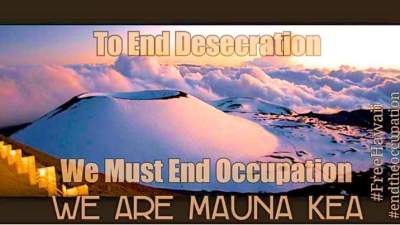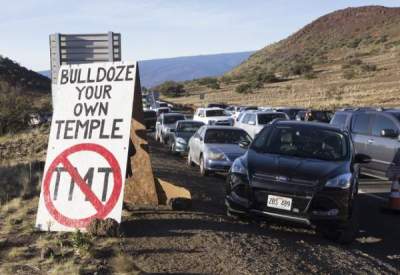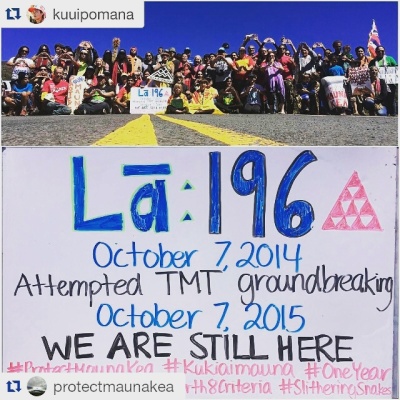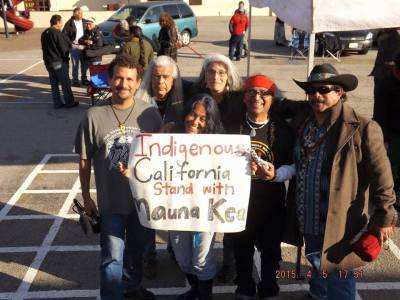 It seems like there is a perpetual debate over acquiring land for progress and growth versus the protection of land that has ties to religion, customs, and cultures. The history of America is littered with stories and events that deal with acquisition of land. The sake of growth, expansion, and progress takes precedence in the history of America. Our country’s geography is a road map of acquired land and the pushing aside sacrality.
It seems like there is a perpetual debate over acquiring land for progress and growth versus the protection of land that has ties to religion, customs, and cultures. The history of America is littered with stories and events that deal with acquisition of land. The sake of growth, expansion, and progress takes precedence in the history of America. Our country’s geography is a road map of acquired land and the pushing aside sacrality.
Our country has treated sacred land in a variety of ways. Religious sites have found their way, at times, to the front lines of protest and change. Religions across the globe carry some sort of Mother Earth element. Hinduism has the goddess Pṛthivī, the Greeks worshiped Gaia and Hestia, and the Hopis called her Tuuwaqatsi. Papahānaumoku is Mother Earth to Hawaiians. She is the life-giving force and the ancestor to all human beings. Honoring the earth becomes honoring our mother.
The respect of the land is strengthened with the addition of the embodiment of a sacred mother. The designation of sacred land does imply that there are areas which are not innately holy. These areas have become the vast spreads of human civilizations. For the majority of continental United States, land has been zoned, acquired, and built on. On the island of Hawaii, there has been an ongoing push and pull between expansion, science, and sacred land. The protection and more importantly the preservation of the Hawaiian culture, religion, and land has been constant ever since the first foreign explorer came to her shore. 
Over 200 days, active protesters have been living on the sacred mountain/dormant volcano Mauna Kea in Hawaii. It is the highest point in the state of Hawaii. Mauna Kea is considered to be the holiest and sacred places for Hawaiians; traditional beliefs held that only the most sacred of Ali’I, honorable rulers, were allowed to ascend Mauna Kea. Ancient Hawaiian lived and thrived at the base of the mountain. When Europeans and their livestock were introduced to the island, things started to shift. Due to its high elevation and three section climate, it has been deemed the best sites for astronomical observation. This new designation is what has tipped the balance from sacred mountain to scientific gold mind.
An access road was established to gain entrance to the mountain top in 1963. That year also saw the first telescope. To date there are 13 telescopes funded by 11 countries atop of Mauna Kea. The Mauna Kea Observatories have studied everything from visible lay, radio rays, and weather patterns. In 1968, the Hawaii Department of Land and Natural Resources gave a 65-year lease for all land within a 2.5-mile radius of the telescopes to the University of Hawaii. The growth of scientific research has been met with protests and a call of action to preservation the sacrality of Mauna Kea.

Since its statehood, native Hawaiians have struggled to maintain their autonomy, their culture, their sacredness. An approved plan for a new Thirty Meter Telescope has been opposed by native Hawaiians and activists since its inception. During its proposed ground breaking in October of 2014, protesters blocked the road and construction was halted. The We Are Mauna Kea, Protect Mauna Kea, and Defenders of Mauna a Wakea movements were born.

The participants have called themselves protectors. They are protecting the sacredness of Mauna Kea, Aloha ‘Aina – the love of the land. But it has also taken on an added significance. It has also become an outcry for the protection of culture, of hawaiianess, and of community. It has become not just the preservation of the sacred mountain but also of the entire Hawaiian state.

The protests successfully gained awareness forcing the State of Hawaii and the University to hold inquiries. For over 200 days, protectors have lived on the mountain. The opposition has arrested multiple protesters in multiple instances. We Are Mauna Kea Protests were initiated all across the Hawaiian Islands. Protesters staged rallies at the TMT headquarters in Pasadena. They have petitioned the university and the Hawaiian state. The rallies and protests have also connected with other indigenous people and their continual struggles with protecting their lands and their cultures.

Social Media has been crucial in the continual support and awareness of Mauna Kea. Protesters started to post pictures of We are Mauna Kea on their bodies to spread the awareness; awareness that the construction and appropriation of Mauna Kea also means the appropriation of Hawaiianness, even the very bodies to which one resides in.

It is about having culture, tradition, and sacredness being sacrificed for technology, knowledge, and progress. Protect Mauna Kea regularly posts the progress, the protests, and the arrests. The Facebook group, Defenders of Mauna Kea regularly hold rallies, events, and workshops. A recent post states,
Stand in UNITY ALL INDIGENOUS PEOPLE! Things are happening to all of our Sacred Places and it is time to LOKAHI!!!!!!! TOGETHER WE RISE!!!!!!!
Come raise your voices, your intentions, your vibrations, prayers this day as ONE!
We are ALL in this TOGETHER!!!!!
Tribes of Hawai’i, Tribes of the Americas, Tribes of Canada, Tribes of Alaska, Tribes of Asia, Tribes of the World
KU KIA’I MAUNA!!!!!! (To stand Strong like a Mountain)
Together we are not defeated
Currently the protests are still going on. The protests have brought awareness that more consideration needs to be given to sacred land, to the consideration that progress and technology might not be the best for the land and her people. It might be 2015 but we are still struggling to find a balance between progress and sanctity; honoring mother earth and moving towards the future.
Anjeanette LeBoeuf is currently studying for her qualifying exams in Women Studies in Religion at Claremont Graduate University. Her focuses are divided between South Asian religions and religion and popular culture. She has become focused on exploring the representations of women in all forms of popular culture and how religion plays into them. Recently she drove across country to learn Sanskrit at the University of Wisconsin, Madison. She is an avid supporter of both soccer and hockey. She is also a television and movie buff which probably takes way too much of her time, but she enjoys every minute of it.


Thank you for this information.
OK, if this is a good telescope spot, why does each nation state have to have its own telescope and people to use and maintain it in order to get what I presume is much the same information? If we are going to degrade nature for the sake of knowledge of nature, let’s at least not degrade nature more than is necessary.
My work trying to prevent very large wind turbines to be put on mountaintops in Lesbos alerted me to the fact that it is not just the presence of the turbine or telescope on the mountaintop, but a huge amount of land degradation for road building to get these huge contraptions up there. Also in the case of wind turbines, when they stop working after 20 years, they are simply abandoned to continue to degrade the landscape “forever.” There are no plans in place for removal, recycling, or proper disposal.
Your blog brings home again to me the fact that the “scientific worldview” has very little respect for “the land” and “the people who care for the land.” “It” and “we” are “mere matter” to be moved out of the way in the name of what is called “scientific progress.”
And if we protest, we are told that we are impeding the “progress” of “science.”
In fact, we are talking about a paradigm shift and a wholly different way of thinking about the world. Siggghhhhhhh
LikeLike
So true. We need a world in which scientific study and sacredness complement each other. That would be what I call “progress”.
LikeLike
I agree with you Judith, that would most definitely be progress. A way to which growth, technology, and science work side by side with the protection of sacred land and its people.
LikeLike
The best example of a happy marriage between science & sacredness might be eco-spirituality, and a topic we could explore effectively at FAR maybe.
LikeLike
I’m so glad you shared your experiences of where progress has tried to bulldoze sacred land Carol. It is one of the things I appreciate about FAR that through a post, we can start to share our experiences, find common ground, and hopefully find a united path.
There have been many cases from Nature Conservatives and Ecologists that have shown that the increased foot traffic and construction is detrimental to the ecosystems present on Mauna Kea. The multiple countries with their interests with telescopes has always reminded me of how historically countries have never been satisfied letting others ‘discover’ land. It is something that we need to be ever vigilant about. That despite living in the 21st century, we are still grappling with issues that our ancestors struggled with.
LikeLike
Not sure I would use the term scientific worldview. I think it has a lot more to do with power and money especially when it comes to the location of wind turbines.
LikeLike
The Protectors of the Land, indigenous people and their supporters, are also keeping construction crews from laying an oil pipeline on Burnaby Mountain in Vancouver BC. Different groups in different areas of B.C. trying also to preserve sacred areas and First Nations Land. I see this moving together for creation as a sign of awakening and hope. And I like that there are others who come from other areas of society joining them in support, keeping a sacred fire burning, saying “No!” to the corporations who consider the earth only for their financial profit.
LikeLike
Barbara, thanks for bringing this to our attention of the continual struggle in Vancouver. This is something that we need to get reminding people of.
LikeLike
Thanks, Barbara, for this sharing. And you have a great point on “scientific worldview,” where instead power and money are the central issues. Well said.
LikeLike